- Ivy Care at Home
- Introduction
- Light
- Watering
- Fertilizing
- Pruning
- Pests
- Conclusion
- Tips for Growing Ivy Indoors
- Ivy Species
- Common Ivy (Hedera Helix)
- Benefits and Uses
- Common Varieties
- English Ivy (Hedera Helix)
- Appearance and Growth
- Care and Maintenance
- Benefits and Uses
- Potential Concerns
- Conclusion
- Boston Ivy (Parthenocissus Tricuspidata)
- Planting and Care
- Species and Varieties
- Benefits and Uses
- Pests and Diseases
- Ivy Varieties
- 1. English Ivy (Hedera helix)
- 2. Algerian Ivy (Hedera canariensis)
- 3. Persian Ivy (Hedera colchica)
- 4. Duckfoot Ivy (Hedera ivy)
- 5. Japanese Ivy (Hedera rhombea)
- Variegated Ivy (Hedera Helix ‘Goldchild’)
- Key Features:
- Care Guide:
- Uses:
- Summary:
- Japanese Ivy (Hedera Rhombea ‘Ogon’)
- Appearance
- Growing Conditions
- Propagation
- Uses
- Care and Maintenance
- Pest and Disease Issues
- Persian Ivy (Hedera Colchica ‘Dentata’)
- Characteristics:
- Care Requirements:
- Uses:
- Caution:
- Q&A:
- What are the different species of ivy?
- How do I take care of ivy at home?
- What are the different varieties of ivy?
- Can ivy be grown outdoors?
- Is ivy toxic to pets?
- Video: Water vs Soil Propagation: 7 Week Comparison with Pothos | Should I propagate in water or soil?
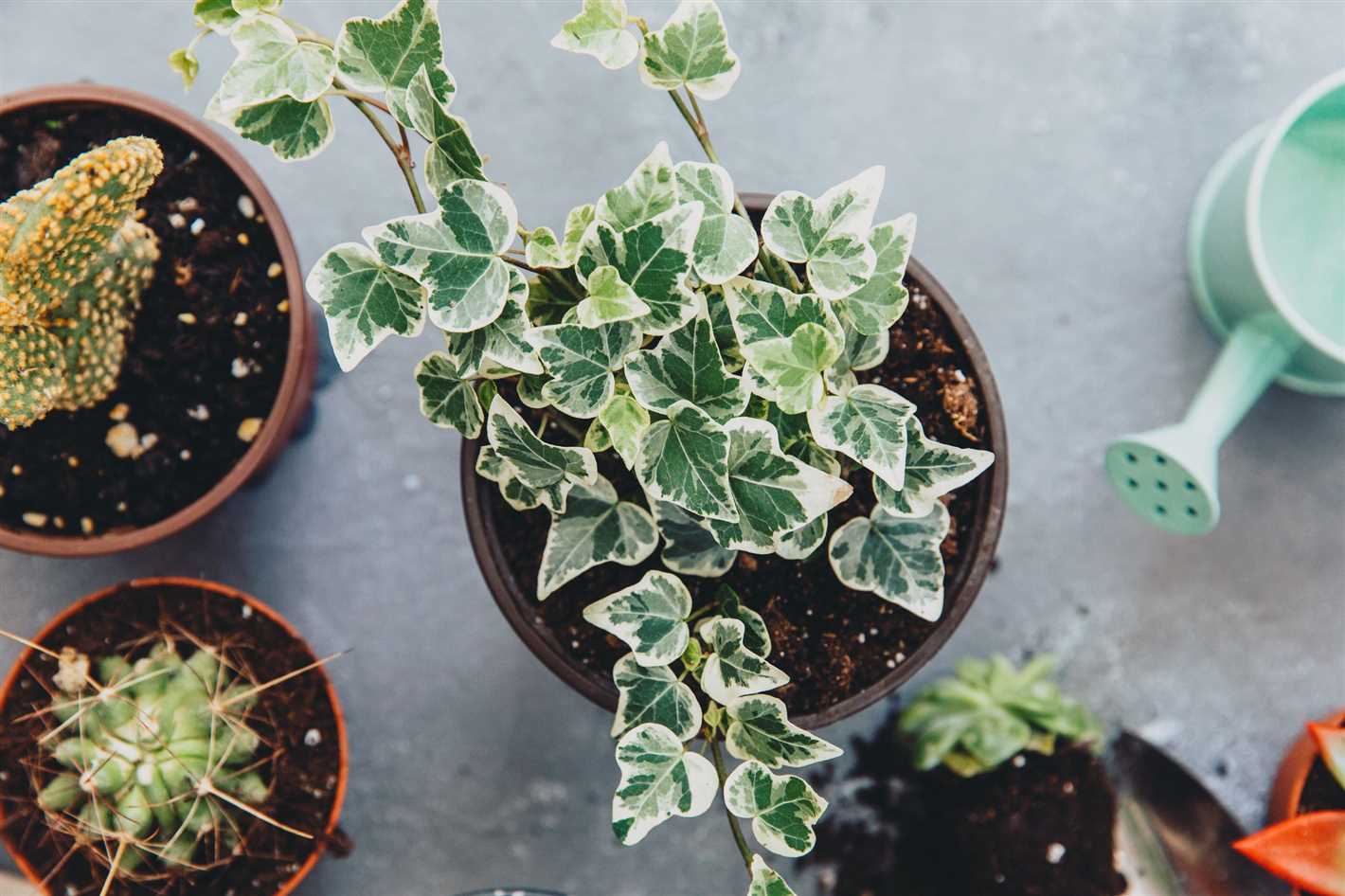
Welcome to our comprehensive guide on ivy care at home, as well as the various species and varieties available. Ivy is a popular choice for both indoor and outdoor gardening due to its versatile nature and beautiful foliage. Whether you are a seasoned gardener or a beginner, this guide aims to provide you with all the necessary information to successfully cultivate and maintain ivy plants.
Known for its ability to climb and cover surfaces, ivy is a great plant for adding texture and greenery to any space. It can be grown as a houseplant, in hanging baskets, or trained to climb up trellises and walls. With its lush, dark green leaves and trailing or climbing habit, ivy adds a touch of elegance and brings life to any corner of your home.
In this guide, we will explore the different species and varieties of ivy, each with its unique characteristics and growing requirements. From the classic English ivy (Hedera helix) to the variegated Algerian ivy (Hedera canariensis), you will discover a wide range of options to suit your personal style and preferences. Additionally, we will provide you with tips and tricks on how to care for your ivy plants, including watering, light requirements, and common pests and diseases to watch out for.
Whether you are looking to add a touch of greenery to your living space or create a stunning outdoor garden, this guide will equip you with the knowledge and tools to grow and care for ivy plants successfully. Let’s dive into the wonderful world of ivy and discover the beauty and benefits it brings to our homes and gardens.
Ivy Care at Home
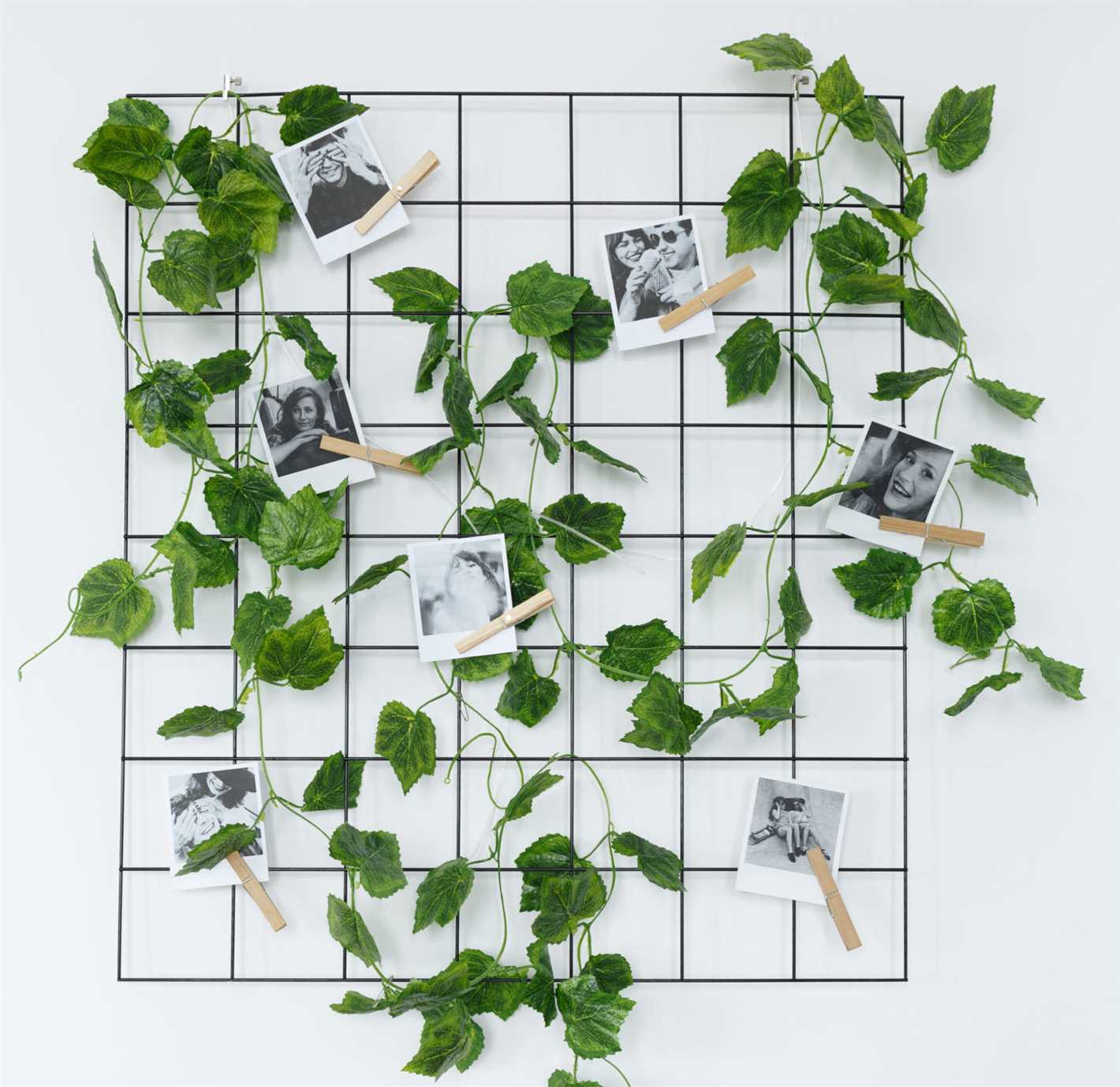
Introduction
Ivy plants are popular choices for indoor and outdoor decor. They are known for their beautiful and lush green foliage, which can add a touch of elegance to any space. Taking care of ivy plants at home is relatively easy, and with the right knowledge and techniques, you can ensure that your ivy plants thrive and stay healthy.
Light
When it comes to light requirements, ivy plants prefer bright but indirect sunlight. They can tolerate some shade, but too much shade can cause their growth to become leggy and sparse. Place your ivy plant in a well-lit area that receives bright, filtered light throughout the day, but avoid placing them in direct sunlight as it can scorch their leaves.
Watering
Proper watering is essential for the health of ivy plants. They prefer evenly moist soil, so make sure to water them when the top inch of soil feels dry to the touch. Be cautious not to overwater your ivy plant, as it can lead to root rot and other issues. On the other hand, allowing the soil to dry out completely can cause stress to the plant. Monitor the moisture levels of the soil regularly and adjust your watering schedule accordingly.
Fertilizing
Ivy plants benefit from regular feeding during the growing season, which is typically spring and summer. Use a balanced liquid fertilizer every four to six weeks to provide the necessary nutrients. Be sure to follow the instructions on the fertilizer packaging for proper dilution and application.
Pruning
Pruning ivy plants is essential to maintain their shape and promote bushier growth. Trim back any excessively long or leggy branches to encourage new growth. You can also pinch off the growing tips of the stems to encourage branching. Regular pruning will help keep your ivy plant compact and attractive.
Pests
Ivy plants can be susceptible to pests such as aphids, spider mites, and mealybugs. Regularly inspect your plants for any signs of infestation, such as tiny webs, sticky residue, or distorted leaves. If you detect any pests, treat your ivy plant with insecticidal soap or neem oil according to the product instructions.
Conclusion
By following these care tips, you can ensure that your ivy plants thrive and bring beauty to your home. Remember to provide them with the right amount of light, water them properly, fertilize regularly, prune when needed, and keep an eye out for pests. With a little attention and care, your ivy plants will flourish and be a lovely addition to your home decor.
Tips for Growing Ivy Indoors
Choose the right location: Ivy prefers bright, indirect light, so place your indoor ivy plant near a window with filtered sunlight.
Provide proper drainage: Make sure your ivy plant is in a pot with drainage holes to prevent waterlogged soil. You can also add a layer of small pebbles at the bottom of the pot for additional drainage.
Water correctly: Ivy plants like to be evenly moist, but not soaked. Water your ivy plant when the top inch of soil feels dry to the touch. Avoid overwatering, as it can lead to root rot.
Control humidity: Ivy plants thrive in moderately humid environments. If your home has dry air, mist the leaves of your ivy plant with water or place a tray filled with water near the plant to increase humidity.
Feed regularly: Fertilize your ivy plant every two to four weeks during the growing season with a balanced liquid fertilizer. Follow the instructions on the fertilizer package for proper dilution and application.
Prune regularly: Ivy plants can become unruly if not pruned regularly. Trim back any long or leggy vines to maintain a compact shape and promote bushier growth. You can also pinch off the growing tips to encourage branching.
Watch out for pests: Keep an eye out for common ivy pests such as spider mites, aphids, and mealybugs. Check the leaves regularly for any signs of infestation, and treat them with an appropriate insecticide if necessary.
Provide support: Ivy plants are climbers and can grow well on various supports, such as trellises or moss poles. Provide a sturdy support for your ivy plant to climb on and train the vines as they grow.
Rotate the plant: To ensure even growth, rotate your ivy plant once every few weeks to expose all sides to light. This will prevent the plant from leaning or growing lopsided.
Monitor temperature: Ivy plants prefer temperatures between 55-75°F (13-24°C). Avoid placing your ivy plant near drafty windows or areas with extreme temperature fluctuations.
By following these tips, you can successfully grow ivy indoors and enjoy the beauty of this versatile houseplant.
Ivy Species
Ivy is a versatile and popular plant that belongs to the genus Hedera. There are many different species of ivy, each with its own unique characteristics and growth habits. Here are some of the most common ivy species:
- Hedera helix: Also known as English ivy, this species is one of the most widely recognized. It has dark green, glossy leaves with distinctive lobes. English ivy is known for its climbing ability and is often used to cover walls or fences.
- Hedera canariensis: Commonly referred to as Algerian ivy, this species has larger leaves than English ivy and a more vigorous growth habit. It is often used as a groundcover and can quickly form a dense carpet of foliage.
- Hedera colchica: Known as Caucasian ivy, this species is native to the Caucasus region. It has large, heart-shaped leaves and a robust growth habit. Caucasian ivy is often used to provide a lush backdrop in gardens and landscapes.
- Hedera hibernica: Also known as Atlantic or Irish ivy, this species is similar to English ivy but has larger leaves and tends to be more cold-tolerant. Irish ivy is commonly used for its ability to cover walls and provide an evergreen backdrop.
These are just a few examples of the many ivy species available. Each species has its own unique characteristics and growth requirements, so it’s important to choose the right one for your specific needs and growing conditions.
Common Ivy (Hedera Helix)
- Family: Araliaceae
- Genus: Hedera
- Species: Helix
Common Ivy, also known as Hedera Helix, is a popular climbing vine that is native to Europe, western Asia, and North Africa. It is a member of the Araliaceae family and belongs to the Hedera genus.
This evergreen plant is well-known for its ability to rapidly climb and cover surfaces, making it a favorite choice for gardens, walls, and fences. It features dark green, glossy leaves that can have a variety of shapes, including lobed, unlobed, or with three to five lobes. The leaves are typically heart-shaped and have a waxy texture.
Common Ivy produces small, greenish-yellow flowers in the late summer or early autumn. These flowers are followed by black or dark purple berries that are a valuable food source for birds.
One of the main advantages of Common Ivy is its adaptability to various growing conditions. It can thrive in both full sun and shade and is tolerant of a wide range of soil types. However, it prefers moist, well-draining soil.
It is important to note that while Common Ivy is an attractive and versatile plant, it can become invasive if not properly maintained. Regular pruning is necessary to control its growth and prevent it from smothering other plants.
Benefits and Uses
Common Ivy provides several benefits and is widely used in landscape design. Some of its benefits and uses include:
- Ornamental Purposes: Common Ivy is a popular choice for creating a lush and green backdrop in gardens. Its dense foliage and climbing ability make it perfect for covering unsightly walls, fences, or tree stumps.
- Wildlife Habitat: The dense cover provided by Common Ivy creates an excellent habitat for birds, insects, and other small animals.
- Air Purification: Like other plants, Common Ivy helps purify the air by absorbing pollutants and releasing oxygen.
- Ground Stabilization: Common Ivy’s extensive root system helps stabilize soil, making it useful for erosion control on slopes or banks.
- Medicinal Uses: Traditional medicine has used extracts from Common Ivy for treating respiratory conditions, coughs, and bronchitis.
Common Varieties
There are numerous cultivars and varieties of Common Ivy available, offering a range of leaf shapes, sizes, and variegation. Some popular varieties include:
| Variety | Description |
|---|---|
| Hedera Helix ‘Goldchild’ | This variety has leaves that are deep green with yellow edges, adding a splash of color to any garden. |
| Hedera Helix ‘Gloire de Marengo’ | This variegated variety has large, gray-green leaves with creamy-white margins, creating an eye-catching display. |
| Hedera Helix ‘Arborescens’ | This variety has larger leaves and a more upright growth habit, making it suitable for use as a screen or hedge. |
| Hedera Helix ‘Buttercup’ | This variety features bright yellow leaves that create a striking contrast with other plants. |
With its versatility, attractive foliage, and numerous cultivars, Common Ivy is a popular choice for both home gardeners and landscape professionals.
English Ivy (Hedera Helix)
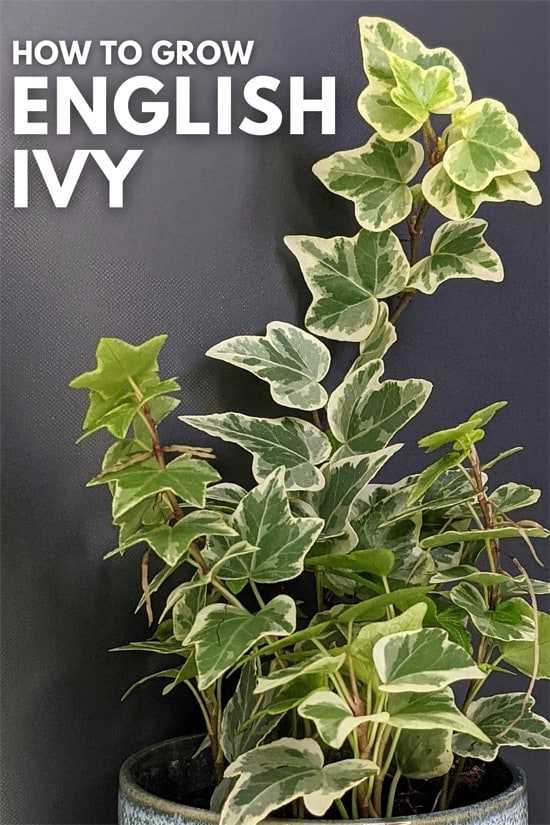
English Ivy, also known as Hedera Helix, is a popular evergreen vine that is native to Europe, Western Asia, and North Africa. It has been widely cultivated as an ornamental plant and is known for its ability to climb walls and other structures with the help of aerial rootlets.
Appearance and Growth
- English Ivy has dark green, glossy leaves that are typically five-lobed, although they can have more or fewer lobes.
- It can grow up to 100 feet in length, making it an excellent choice for covering walls and fences.
- The plant produces small, yellow-green flowers in the fall, followed by black or purple berries.
Care and Maintenance
- English Ivy prefers partial to full shade, although it can tolerate some amount of sun as well.
- It is adaptable to a wide range of soil conditions but prefers moist, well-drained soil.
- Regular watering is necessary, especially during the dry summer months.
- Pruning is essential to control the growth and keep the plant tidy. It can be pruned in late winter or early spring.
Benefits and Uses
- English Ivy is an excellent choice for providing ground cover in shaded areas where grass may struggle to grow.
- It is often used in landscaping to cover walls, fences, and other structures, creating a lush and green aesthetic.
- The plant is also known for its air-purifying qualities, as it can remove toxins from the environment and improve indoor air quality.
Potential Concerns
It’s important to note that English Ivy can be invasive in some regions and may require regular management to prevent it from spreading out of control.
Conclusion
English Ivy, with its attractive foliage and ability to thrive in various conditions, is a versatile plant that can enhance the beauty of any space, whether indoors or outdoors. Just ensure proper care and maintenance to reap its many benefits.
Boston Ivy (Parthenocissus Tricuspidata)
Boston Ivy, also known as Parthenocissus tricuspidata or Japanese Ivy, is a climbing vine native to eastern Asia. It is commonly grown for its attractive foliage and is a popular choice for covering walls, fences, and trellises.
Planting and Care
- Choose a location with full to partial sun, as Boston Ivy can tolerate a wide range of light conditions.
- Ensure the soil is well-draining and fertile.
- Dig a hole that is slightly larger than the root ball and gently place the plant in the hole.
- Backfill the hole with soil, making sure to firm it around the roots.
- Water the plant thoroughly after planting and keep the soil consistently moist.
- Regularly prune Boston Ivy to control its growth and shape.
Species and Varieties
Boston Ivy is a type of climbing vine in the grape family (Vitaceae). It is closely related to Virginia Creeper (Parthenocissus quinquefolia) and has similar growth habits.
There are no known cultivars or varieties of Boston Ivy.
Benefits and Uses
- Boston Ivy is often used as a decorative plant for its vibrant foliage.
- It can effectively cover walls, fences, and other structures, providing a natural and visually appealing screen.
- The plant’s leaves turn a brilliant red in the fall, adding a splash of color to any landscape.
- Boston Ivy is low-maintenance and can tolerate a wide range of soil types and conditions.
- It is also known to be a fast-growing vine, quickly establishing itself on any vertical surface.
Pests and Diseases
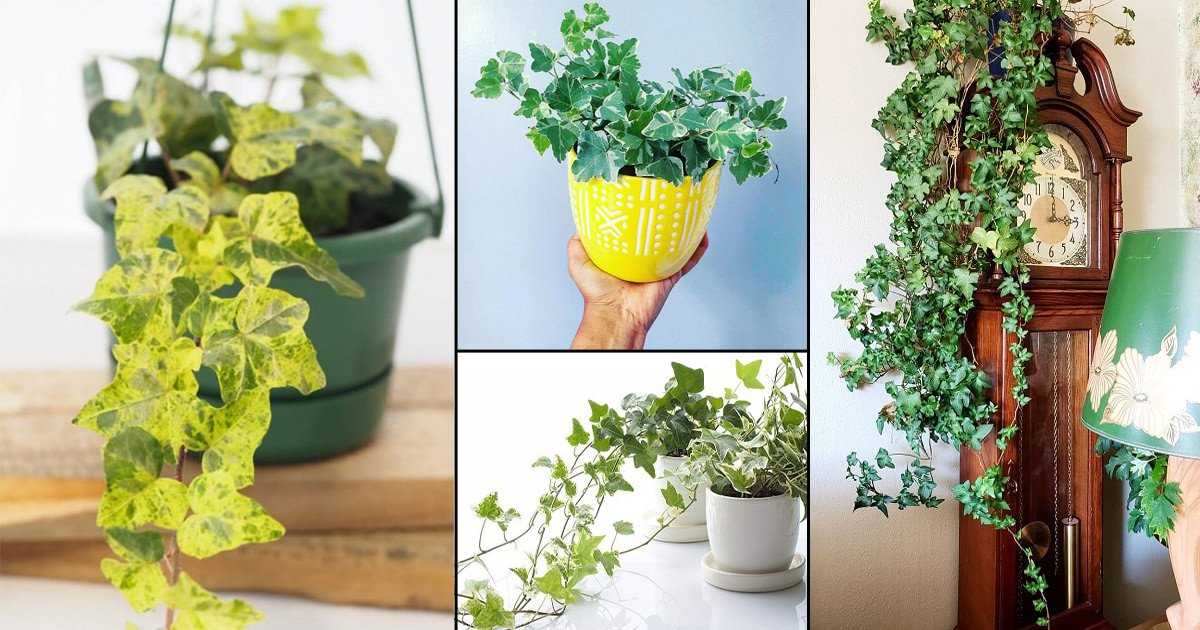
Boston Ivy is relatively resistant to pests and diseases. However, it may occasionally suffer from leaf spot, powdery mildew, or root rot. Regular observation and proper care can help prevent and mitigate these issues.
Ivy Varieties
Ivy, also known as Hedera, is a popular plant that comes in various varieties. Each variety has its own unique characteristics and growth patterns. Here are some of the different types of ivy that you can find:
1. English Ivy (Hedera helix)
English ivy is one of the most common and recognizable types of ivy. It has dark green, glossy leaves that are typically three-lobed. This variety is known for its vigorous growth and climbing ability. English ivy is often chosen for its ability to cover walls, fences, and arbors.
2. Algerian Ivy (Hedera canariensis)
Algerian ivy is native to the Canary Islands and has slightly larger leaves compared to English ivy. Its leaves are heart-shaped and have a leathery texture. Algerian ivy is a fast-growing variety that is often used as a ground cover or in hanging baskets.
3. Persian Ivy (Hedera colchica)
Persian ivy is known for its large, shiny leaves and vigorous growth habit. It has five-lobed leaves that are typically dark green or variegated. Persian ivy is commonly used for ground cover or as a climbing vine.
4. Duckfoot Ivy (Hedera ivy)
Duckfoot ivy gets its name from its unique leaves, which resemble the shape of a duck’s foot. This ivy variety has small, rounded leaves with three or five lobes. Duckfoot ivy is often used as a ground cover or in hanging baskets.
5. Japanese Ivy (Hedera rhombea)
Japanese ivy is native to East Asia and has larger leaves compared to other ivy varieties. Its leaves are typically heart-shaped with glossy, dark green coloration. Japanese ivy is a fast-growing variety that is often used as a ground cover or in hanging baskets.
These are just a few examples of the many ivy varieties that are available. Each variety has its own unique features, so it is important to choose one that suits your specific needs and preferences. Whether you are looking for a climber, ground cover, or a plant for hanging baskets, there is an ivy variety that will work for you.
Variegated Ivy (Hedera Helix ‘Goldchild’)
Variegated Ivy, also known as Hedera Helix ‘Goldchild’, is a popular ivy variety appreciated for its attractive foliage. This variegated cultivar features heart-shaped leaves with a vibrant green color and striking yellow or gold streaks.
One of the main reasons gardeners choose Variegated Ivy is its ability to add a pop of color to any space. The combination of green and gold foliage creates a visually appealing contrast that enhances the beauty of any garden or indoor area.
Key Features:
- Heart-shaped leaves with green and gold variegation
- Trailing habit, perfect for hanging baskets or climbing on walls/fences
- Tolerates a wide range of light conditions, from full shade to partial sun
- Low maintenance plant
- Excellent air-purifying properties
Care Guide:
Light: Variegated Ivy can tolerate a wide range of light conditions, from full shade to partial sun. However, it thrives in bright, indirect light.
Water: Keep the soil evenly moist, but do not let the plant sit in water. Allow the top inch of soil to dry out before watering again.
Temperature: Variegated Ivy prefers temperatures ranging from 50°F to 70°F (10°C to 21°C). It can tolerate cooler temperatures during winter, but avoid exposing it to freezing conditions.
Humidity: This ivy variety enjoys moderate to high humidity levels. Mist the leaves occasionally or place a humidifier nearby to increase humidity.
Soil: Use well-draining soil that retains some moisture. A mix of potting soil, perlite, and peat moss is ideal for Variegated Ivy.
Fertilizer: Feed the plant with a balanced liquid fertilizer every month during the growing season (spring and summer). Follow the instructions on the fertilizer packaging for proper dosage.
Propagation: Variegated Ivy can be propagated through stem cuttings. Take a 4-6 inch cutting and remove the lower leaves. Place the cutting in water or moist soil until roots develop. Once rooted, you can transfer it to a pot with potting soil.
Uses:
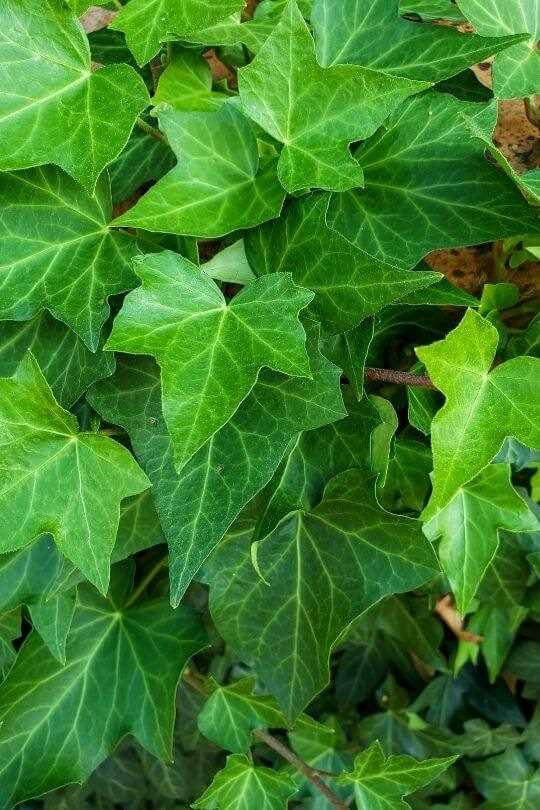
With its trailing habit, Variegated Ivy is commonly used in hanging baskets, where its cascading foliage adds a touch of elegance. It can also be trained to climb on walls, fences, or trellises, creating a beautiful green tapestry.
Additionally, Variegated Ivy is an excellent choice for purifying the air indoors. Its dense foliage helps filter out pollutants and improve air quality.
Summary:
Variegated Ivy (Hedera Helix ‘Goldchild’) is a stunning ivy variety with green and gold variegated foliage. It is a low maintenance plant that can thrive in a variety of light conditions. Whether used in hanging baskets or trained to climb, this ivy adds a touch of beauty and elegance to any space.
Japanese Ivy (Hedera Rhombea ‘Ogon’)
Japanese Ivy, also known as Hedera Rhombea ‘Ogon’, is a beautiful and versatile plant that is widely grown for its attractive foliage and easy care requirements. It belongs to the family Araliaceae and is native to Japan and several other parts of Asia.
Appearance
The Japanese Ivy has variegated leaves that are a striking combination of green and yellow. The leaves are small, measuring around 1-2 inches in length, and have a unique shape that is diamond-like or rhombus-shaped. The variegation pattern on the leaves is quite irregular, adding to the charm of this plant. Japanese Ivy can grow up to 2-3 feet in height and has a spreading growth habit.
Growing Conditions
Japanese Ivy is a hardy plant that can adapt to various growing conditions. However, it thrives best in partial shade, although it can tolerate full sun or full shade as well. It prefers moist, well-draining soil with a slightly acidic to neutral pH level. Japanese Ivy is known to be drought-tolerant once established, making it a suitable choice for gardens with sporadic watering.
Propagation
Propagation of Japanese Ivy can be done through stem cuttings or by layering. Stem cuttings can be taken during spring or early summer. Remove a healthy stem that has a few leaves, dip the cut end in rooting hormone, and plant it in a well-draining soil mixture. Keep the soil moist until the cutting takes root. Layering involves burying a section of the stem that is still attached to the parent plant, covering it with soil, and allowing it to develop roots before separating it from the parent plant.
Uses
Japanese Ivy is commonly used as a ground cover due to its spreading growth habit. It can quickly fill in empty spaces and provide a lush green carpet-like look to the garden. It can also be grown as a climbing vine on trellises, walls, or fences. The variegated foliage adds a touch of color and visual interest to any landscape. Additionally, Japanese Ivy is often grown in hanging baskets or containers, where its trailing stems create an attractive hanging display.
Care and Maintenance
Japanese Ivy is a low-maintenance plant that requires minimal care. Regular watering is essential during the establishment phase, but once established, it can tolerate dry periods. Fertilize Japanese Ivy with a balanced slow-release fertilizer during the growing season to promote healthy growth. Pruning can be done in early spring to remove any dead or damaged stems and to control its spread. The plant can become invasive if not properly maintained, so occasional monitoring and containment are necessary.
Pest and Disease Issues
Japanese Ivy is generally resistant to most pests and diseases. However, it may occasionally be affected by spider mites, aphids, or scale insects. Regular inspection of the plant for any signs of infestation is recommended. In case of an infestation, treat it with an appropriate insecticide or horticultural oil. Japanese Ivy can also be susceptible to root rot if the soil is overly saturated or poorly drained.
| Plant Type | Perennial Climber |
|---|---|
| Watering Needs | Low to Moderate |
| Sun Exposure | Partial Shade to Full Sun |
| Soil pH | Slightly acidic to neutral |
| Height | 2-3 feet |
| Spread | Varies |
Persian Ivy (Hedera Colchica ‘Dentata’)
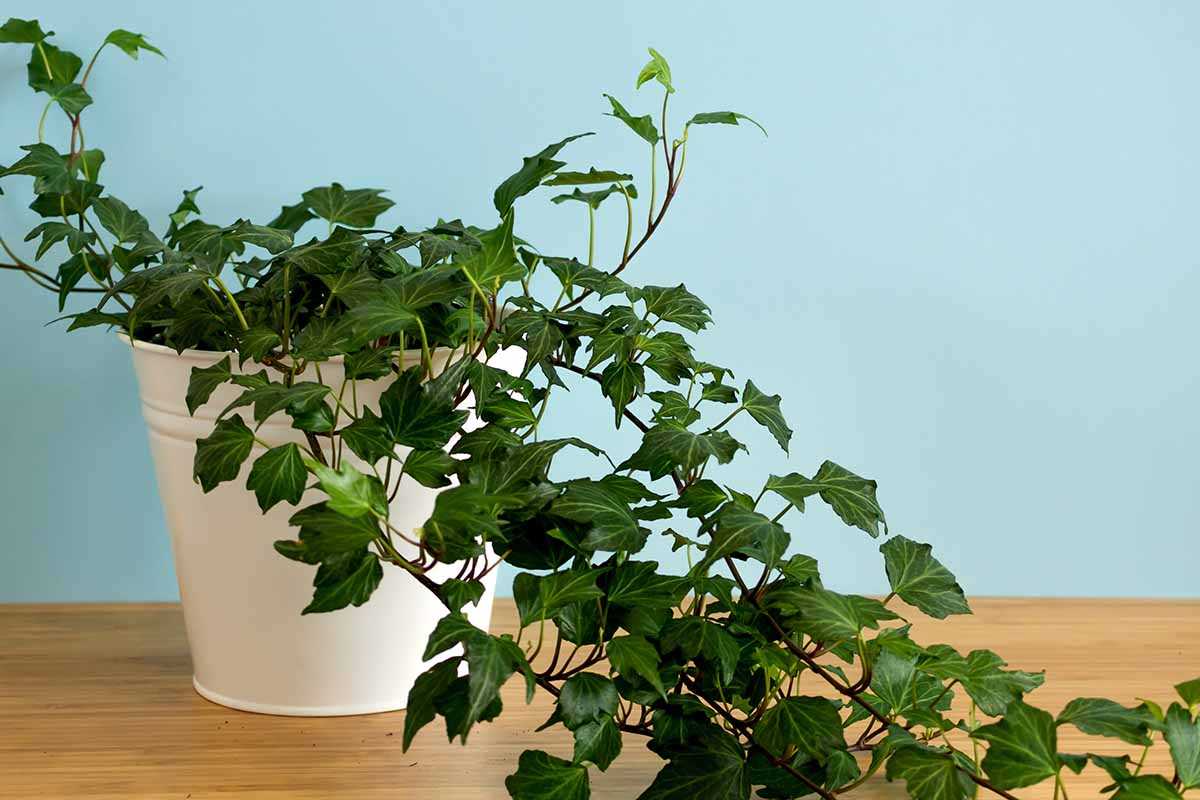
Persian Ivy, also known as Hedera colchica ‘Dentata’, is a variety of ivy that belongs to the Araliaceae family. It is native to the Caucasus and Iran regions and is popularly grown for its lush foliage and ability to cover walls, fences, and other structures.
Characteristics:
- The Persian Ivy has large, shiny leaves with a leathery texture.
- Its leaves are typically heart-shaped and have a serrated or dentate margin, hence the name “Dentata.”
- The foliage of this ivy is usually dark green, but some varieties can have variegated or marbled leaves.
- It can produce small, inconspicuous flowers that are attractive to bees and other pollinators.
- This ivy variety is known for its vigorous growth and can reach heights of up to 30 meters if left unpruned.
Care Requirements:
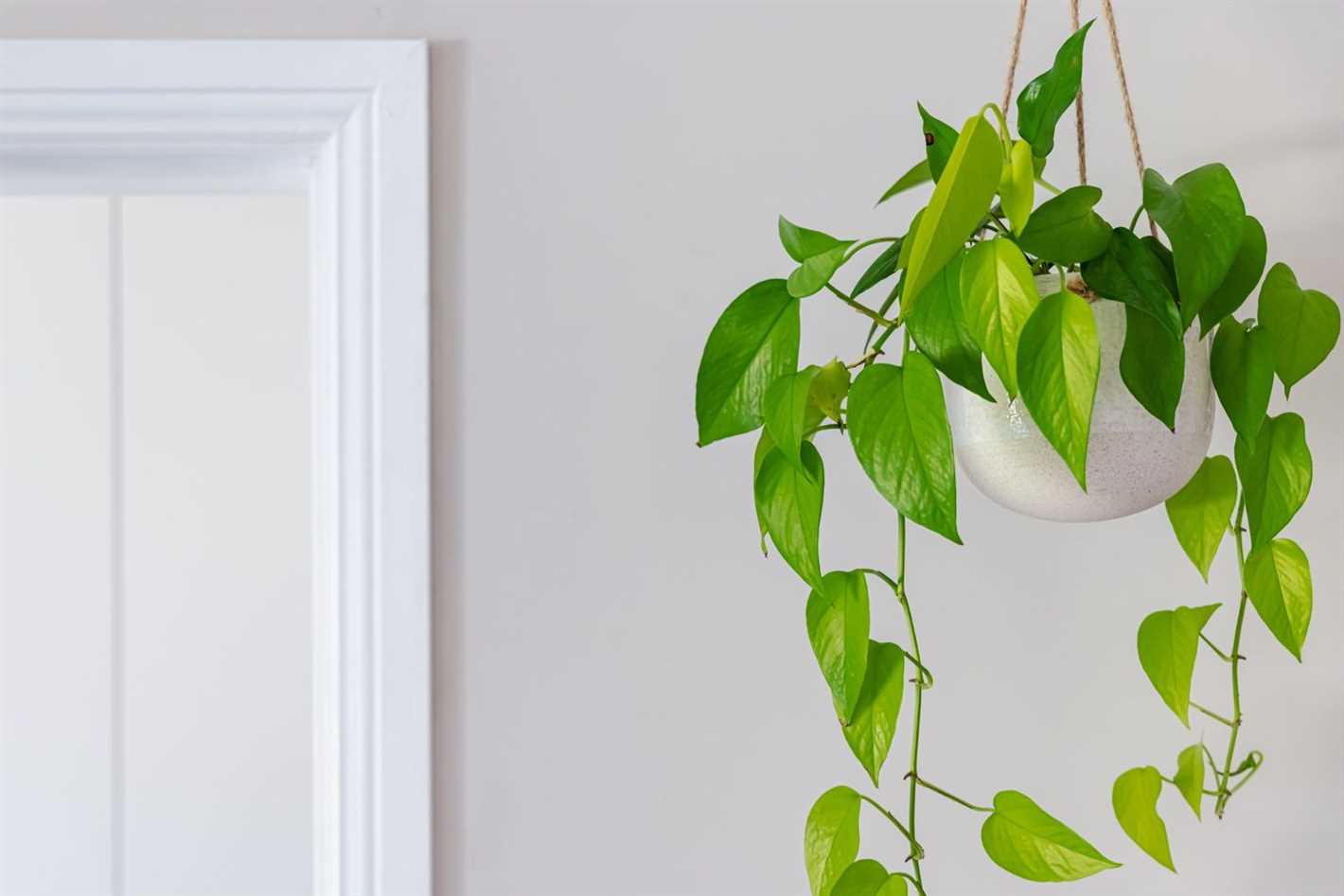
Persian Ivy is a relatively low-maintenance plant, and here are some care tips to ensure its healthy growth:
- Light: The Persian Ivy thrives in partial shade to full shade conditions. It can tolerate some sunlight, but direct exposure to intense sunlight for extended periods can cause leaf burn.
- Watering: Keep the soil evenly moist but avoid overwatering, as it can lead to root rot. Allow the top inch of the soil to dry out before watering again.
- Soil: This ivy variety prefers well-draining soil that is rich in organic matter. It can adapt to different soil types, including loam, clay, or sandy soil.
- Fertilization: Feed the Persian Ivy with a balanced, water-soluble fertilizer during the growing season to promote healthy growth. Follow the instructions on the fertilizer package for application rates.
- Pruning: Regular pruning is necessary to control the growth of Persian Ivy. Trim back any excessive growth to maintain its desired shape and prevent it from becoming invasive.
- Pest and Disease Control: Persian Ivy is generally resistant to pests and diseases. However, it can occasionally suffer from aphid infestations or fungal diseases. Regularly inspect the plant for any signs of pests or diseases and take appropriate measures to control them.
Uses:
Due to its vigorous growth and ability to self-cling, Persian Ivy is commonly used as a ground cover or to cover walls, fences, and arbors. It can also be grown in containers or hanging baskets for cascading foliage. Its attractive leaves add a touch of greenery and provide a natural backdrop to gardens or indoor spaces.
Caution:
While Persian Ivy is a beautiful plant, it is important to note that it can be invasive in some regions. Make sure to check with your local authorities or gardening experts before planting it to avoid any potential issues with its spread.
Q&A:
What are the different species of ivy?
There are several species of ivy, including English ivy (Hedera helix), Boston ivy (Parthenocissus tricuspidata), Algerian ivy (Hedera canariensis), and Persian ivy (Hedera colchica).
How do I take care of ivy at home?
To take care of ivy at home, you should provide it with a well-draining potting mix, bright indirect light, regular watering, and occasional fertilization. It’s also important to keep the plant away from drafts and maintain a moderate temperature.
What are the different varieties of ivy?
There are many varieties of ivy, each with its own unique foliage color, texture, and growth habit. Some popular varieties include Golden Pothos (Epipremnum aureum), English Ivy ‘Gloire de Marengo’, and Russian Ivy (Hedera pastuchovii).
Can ivy be grown outdoors?
Yes, ivy can be grown outdoors in many climates. However, it’s important to choose a suitable species for your climate and provide the plant with proper support or a trellis to grow on. Additionally, regular pruning may be necessary to control its growth and prevent it from overtaking other plants.
Is ivy toxic to pets?
Yes, ivy can be toxic to pets if ingested. The leaves contain substances that can cause digestive upset, drooling, and even more severe symptoms in dogs, cats, and other animals. It’s best to keep ivy plants out of reach of pets or opt for pet-safe alternatives.
Video:
Water vs Soil Propagation: 7 Week Comparison with Pothos | Should I propagate in water or soil?







